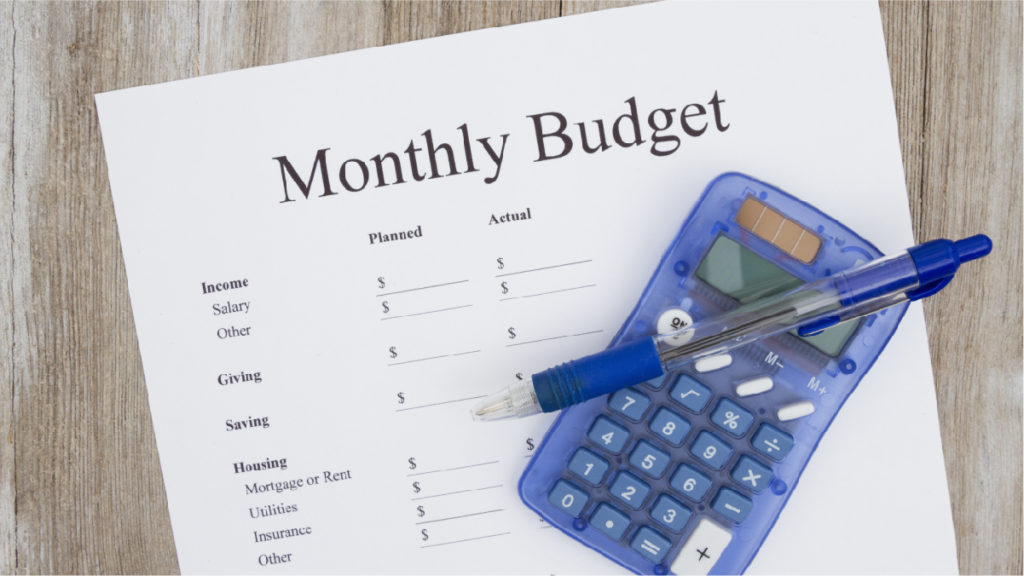Budgeting is one of the most effective financial management tools available to adults. Budgeting is the process of planning how you will spend your money and a system in monitoring your expenses. To effectively manage your spending, knowing the ins-and-outs of budgeting is a must. So what steps does budgeting involve and what should you avoid?
How to Start Budgeting
You can start your budget by making a spreadsheet with Excel or Google Sheets, or use a budgeting app. Below are some templates and apps you can use while planning your budget, tracking your spending, and reviewing.
Templates
Budgeting Apps
5 Budgeting Steps
Step 1: Calculate Your Monthly Income
Your monthly income is the amount of money you earn from salary, profits, etc. There are two types of monthly income you want to calculate:
- Gross Monthly Income – Your monthly income before taxes and deductions.
- Net Monthly Income – Your “take-home pay,” the income you take home monthly after taxes and deductions.
Calculating both is important both for budgeting purposes and tax purposes.
Step 2: Calculate Your Required Expenses
Required expenses are payments and spending that are necessary, obligatory, or mandatory. These expenses are essentials you must have throughout the month, like:
- Housing (rent, mortgage, property taxes)
- Debt
- Other Monthly Bills
- Insurance (Car, Medical)
- Child Care
- Utilities (Water, electricity, gas)
Calculate your monthly required expenses by adding up your various required bills and payments. Required monthly bills do not include subscriptions and memberships (Netflix, magazines, clubs). These are a part of your discretionary income.
TIP: A good way to pay off debt is with debt snowballing. With this method, you pay off debts from lowest balance to highest balance, while rolling the payments from one debt to the next. So if you have three debts, start with the lowest and when it is paid off, move on to the next. This allows you to work your way through your debts efficiently rather than splitting payments up between several debts.
Step 3: Calculate What You Need to Save
When creating your budget, be sure to account for your savings. Your savings are amounts you take out of your monthly income to put away and save for later. Your emergency fund, retirement fund, and college funds are all savings you should consider.
Your emergency is exactly what you would expect. This is the money meant to cushion you during an emergency, like the sudden job loss, totaling your car, hospitalization, etc. Only use emergency funds if the need is unexpected, necessary, and urgent.
To build your emergency fund, you first want to save $1,000. Next, aim to have 3-6 months of living expenses. The $1,000 and the additional living expenses will help you in times of financial distress.
Step 4: Calculate Discretionary Spending
“Discretionary Spending” includes non-essential items such as dining out, clothing, and vacations. You can calculate your discretionary spending by determining how much money you have left after calculating your required expenses and savings.
Step 5: Re-Calculate the Amounts in Steps 1-4 After First Six Months
When you are new to making a budget, you might make mistakes while learning. After the first six months, be sure to recalculate your monthly income, required expenses, savings, and discretionary expenses based on what you observed and any changes that might have occurred.
Fixed Expenses vs. Variable Expenses
Required and discretionary expenses are essential parts of the budget, but they are by no means cut and dry. Within the categories of required and discretionary are fixed and variable expenses.
“Fixed” expenses are the same monthly or are not easily changed. These include rent and mortgage payments, insurance, etc. However, not all fixed expenses are required expenses. Other fixed expenses can include subscriptions (Netflix, Spotify, Dollar Shave Club) and memberships (Gym, Costco).
“Variable” expenses are not the same monthly, as they fluctuate and change over time. Haircuts, dining out, and groceries are all variable expenses. Like fixed expenses, variable expenses do not fall into one category. While many variable expenses are discretionary, they can also be required. Utilities, debt, and gas for your car are examples of variable discretionary expenses.
Fixed expenses are much easier to anticipate than variable expenses, but both are relevant to your budget. Because variable expenses are less predictable, you want to leave wiggle room in your budget to accommodate potential changes.
What NOT to Do
Don’t try to track spending manually. Doing the math in your head or long after purchases will inevitably lead to errors. Use a spreadsheet or budgeting app to track your spending as you go, and make sure to use a calculator.
Don’t guess or estimate. When making a budget, it is better to use historical data to determine a future budget. For example, when planning your monthly food budget, rather than coming up with a new number for the month, look at your budget and spending habits from the month before.
Don’t use someone else’s budget. While examples are a good way to learn how to make a budget, someone else’s budget would not accurately reflect your needs.
Don’t be too strict. A strict budget does not leave a lot of room for change or error. Every month is different and expenses are bound to change. Try to be flexible in case you need to adjust or trim your budget.
If you found this post helpful, check out Part 1, “Bank Accounts for College Students,” if you haven’t already. And don’t forget to subscribe to our weekly blog so you don’t miss out on more posts like this one!
Be sure to connect with us @ecampusdotcom on Twitter, Instagram, & Facebook for more resources, tips, and some great giveaways! And when it’s time for textbooks, eCampus.com
